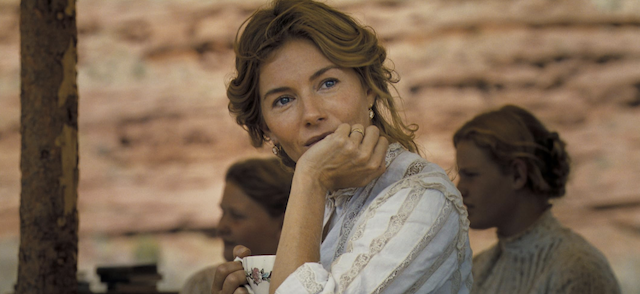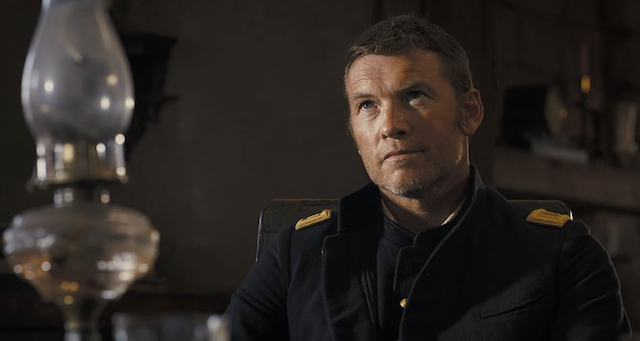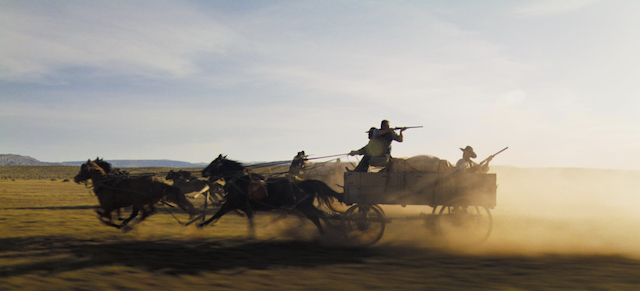
@Courtesy of Warner Brothers
In order to fully enjoy the new western by Kevin Costner you need to be aware that it is a 3-hour set-up to what is meant to be a four-part Odyssey. He shot the first two and is planning to realize the last ones very soon, especially if the box office will respond well. It means you need to understand the scope, the scale, the epic of such a courageous movie. And of course you need to embrace Costner’s vision.
So when you sit on your chair you must be prepared to experience a length of storytelling that has almost completely disappeared on the big screen, confined unfortunately inside the serial television. But Costner never totally followed Hollywood rules, especially when he sat behind the camera. So why should have he started right now?
There is a scene, almost at the end of Horizon: An American Saga -Chapter 1, when the youngest character of all doesn’t use his binoculars as he was asked to do. He in fact refuses to witness the massacre of unarmed indigenous people perpetrated by a bunch of bounty hunters. This is arguably the most metaphorical moment of the movie, with the boy representing the young Country refusing to acknowledge what has been done to the Native Americans.

It would be way too horrifying to really see the reality even through the lens. And still there’s no rhetoric in this sequence, because Costner showed from the very beginning that he had no intention to hide the violence, the bloodshed from both sides of the conflict. Horizon’s meaning is not taking parts but just showing the horrible side of what happened when colonizers tried to start a new life in the wilderness. At the same time, the violence is not exploited by the director in order to shock the audience: Costner is primarily a storyteller trying to be true to his vision of that portion of history.
Horizon: An American Saga -Chapter 1 is such a bold movie especially because of what it isn’t: it’s not politically correct nor is it conservative, it’s not willing to seduce the big audience nor it is provocative. It is just Kevin Costner’s way to tell the story he wants to tell, knowing that western genre belongs primarily to John Ford and Howard Hawks.
The natural, monumental beauty of the landscapes becomes once again by contrast the perfect setting for the misadventures of simple human beings who struggle for survival, who want to raise a family cultivating a piece of land. All the different plots are still unlinked in Chapter 1, but they nonetheless own that perfect mix of intimacy and epic that made the western the most popular genre in the history of Hollywood.

@Courtesy of Warner Brothers
After experiencing the dark, almost pessimistic side of it with the contemporary take of Yellowstone, it seems like Kevin Costner felt the urge to come back at the roots of the western: Horizon in fact in so deeply linked to the classic conception of it that seems something new, while it is in the core a refreshing, modern and adjusted reproposal of those characters and narratives.
How is it possible to understand how good Kevin Costner’s work is? It is actually quite simple. At the end of this three-hour ride, none of the stories will be even remotely close to developing a narrative arc, let alone to an end. But instead of feeling disappointed you’ll feel enthusiastic, eager to keep experiencing this journey through hope, fear, violence, love. This is what great movies do, this is what Kevin Costner achieved with Horizon: An American Saga -Chapter 1. Even it doesn’t necessarily mean that the next part coming to theaters in August will be as effective. But this first half (hopefully quarter) has set such a magnificent, epic storytelling – both narrative and visual – that it is quite impossible to contain the trepidation.

@Courtesy of Warner Brothers
Rate: A
If you like the film, share your thoughts below!
Check out more of Adriano’s articles.
Here’s the trailer of Horizon: An American Saga – Chapter 1
[Adsense]

